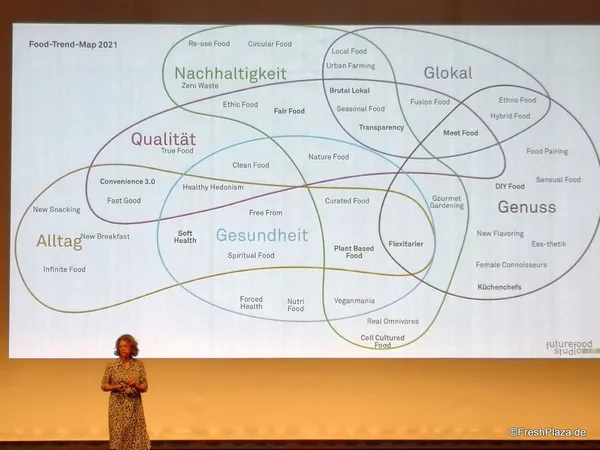The corona virus has a significant impact on one of the core elements of human social behavior: food. COVID moves all humans, world-wide: "Corona goes to our heart", says Hanni Rützler, food trend researcher at futurefoodstudio.
In the area of food supplies, a lot has become clear in the last months: "Eating meals structures everyday life, also in lockdown. Retail sales also prove that people eat together more often and longer."
On a social level, thing are becoming clear as well: "We are seeing a shortage of helpers and problems with working conditions, that will certainly leave a lasting impression on consumers. In retail, women are becoming even more prominent in their role as system owners."
Rützler knows that emotion and identity are closely linked to our diet, and the coronavirus will not change that. However, he said it would be interesting to see how food trends, which have always reflected social change, would develop in the future.
"First of all, we have to clarify how food trends come about: A trend always gives an answer to a situation. A change in everyday life, such as the one that has now happened because of the lockdown, for example, can have an impact. In addition, trends are culture-specific and not universally applicable worldwide." In general, she notes that nutrition is increasingly becoming an identity aspect: "In a society of abundance and increasing individualization, nutrition is increasingly becoming an expression of personality."

In her Food Trend Map 2021, Rützler names the following overarching trends in nutrition: sustainability, glocal, quality, everyday life, health, enjoyment - and all these topics overlap in various aspects.
One particular trend that will probably have an even more extreme impact on the retail trade in the near future is "snackification": "We are moving away from the classic three main meals with snacks. We tend to eat more smaller meals and this will have an impact on consumer demand, both in terms of the type and size of fruit and vegetables."
"We are still in the adaptation phase"
Helmut Hübsch, from GfK SE, delivered the appropriate real-time information on facts, figures and trends at the German Fruit and Vegetable Congress last week in Düsseldorf with his traditional concluding presentation.
"As we have all no doubt noticed, the consumer climate fell sharply in March, but there is now a recovery. Out-of-home consumption has also clearly declined." Retailers recorded an increase, but not to the same extent as the slump in the hospitality industry. "So far, we are still in the adaptation phase, which should then soon change into the new normal."
All in all, he said, similar trends as in the same period in 2019 were observed: "The organic share has increased by 22%. Overall, the purchasing frequency has not collapsed - despite Corona."
At the beginning of the pandemic in Germany - between March and May - more and more fruit was bought, and this has now returned to normal. "Soft fruit continues to be the big winner, and that for many years to come. Stone fruit, on the other hand, is losing ground, while pome fruit remains the same."
With regard to vegetables, it is particularly noticeable that the seasonal trend is less pronounced in most cases than with fruit. "Apart from the special case of asparagus, all vegetables are always (mostly) available." Tomatoes are still the most popular vegetable in Germany; cauliflower is losing ground.
Sales of vegetables remained double-digit above the previous year's level until August, in contrast to fruit, where the trend returned to normal.
